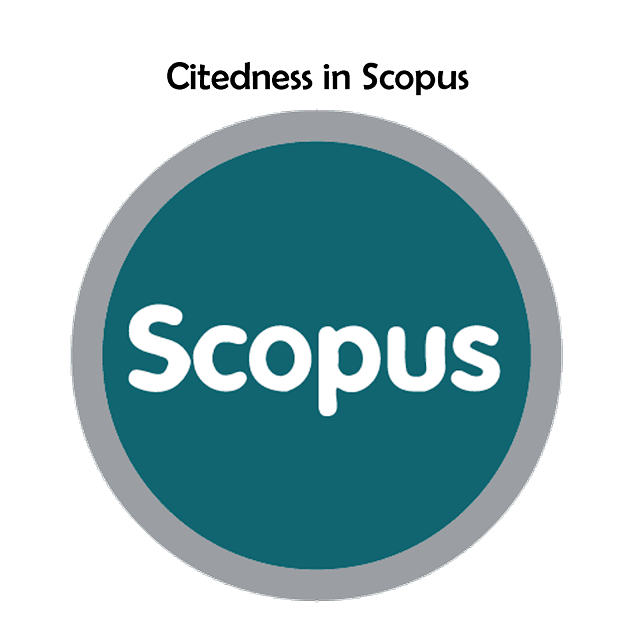EMPOWERING STUDENTS ACCESS CENTER (SAC) IN SUPPORTING ENGLISH LEARNING
DOI:
https://doi.org/10.37249/assalam.v7i2.671Keywords:
Empowering, English Learning, Student Access Center (SAC)Abstract
This study focuses on conducting a need analysis to explore the role and effectiveness of the Student Access Center (SAC) in supporting English Education Department students' learning endeavors. The SAC is a place and an essential resource hub catering to students' academic, personal, and professional needs. The data was collected using a survey design from a questionnaire given to 51 English Education Department students at UIN Antasari Banjarmasin. The questionnaire included five Likert-scale-based choices regarding the student's learning needs about the role of SAC. The investigation delves into various aspects, including the collection of books provided by the SAC, its accessibility, and the extent to which it addresses students' needs both inside and outside the classrooms. The study examines students' perceptions of the SAC's facilities in enhancing their learning, the circulation service, and the function of SAC. Findings from this study contribute to a comprehensive understanding of the SAC's significance in supporting English Education Department students. Ultimately, this research aims to foster a conducive learning environment that maximizes students' academic achievements and success.
Downloads
References
Alokluk, J. (2020). Attitude of Students towards the Use of Library Facilities: A Case Study. International Journal of Humanities, Social Sciences and Education, 7(1), 24-36.
http://dx.doi.org/10.20431/2349-0381.0701003
Ary, D., Jacobs, L. C., Sorensen, C. K., & Razavieh, A. (2014). Introduction to Research in Education (Eighth Edition). New York: Cengage Learning.
Castellano, J., Mynard, J., & Rubesch, T. (2011). Student technology use in a self-access center. Language Learning & Technology, 15(3), 12-27.
http://llt.msu.edu/issues/october2011/actionresearch.pdf
Cheng, H. F., & Lin, N. C. (2010). Exploring students' perceptions of self-access English learning. Procedia-Social and Behavioral Sciences, 2(2), 2676-2680.
https://doi.org/10.1016/j.sbspro.2010.03.394
Cohen, L., Keith, M., & Lawrence, M. (2007). Research Methods in Education (Fifth Edition). New York: Routledge.
Cooker, L. (2008). Self-access materials. In B. Tomlinson (Ed.), English language learning materials: A critical review (pp. 110-132). London: Continuum.
Cotterall, S., & Reinders, H. (2001). Fortress or bridge? Learners' perceptions and practice in self-access language learning. Tesolanz, 8(2001), 23-38.
Retrieved from http://www.hayo.nl/tesolanz.html
Coy, M. N., & Brady, I. K. (2003). Promoting learner autonomy in self-access centers: the key role of material. ELIA: Estudios de Lingüística Inglesa Aplicada, 4(2003), 69-86.
https://revistas.uned.es/index.php/ELIA/article/view/18155
Creswell J.W and Creswell J.D. (2018). Research Design: Qualitative, Quantitative and Mixed Methods Approaches (Fifth Edition). California: SAGE.
Fisher, M. J., & Marshall, A. P. (2009). Understanding Descriptive Statistics. Australian Critical Care, 22(2), 93-97.
https://doi.org/10.1016/j.aucc.2008.11.003
Gardner, D., & Miller, L. (2011). Managing self-access language learning: Principles and practice. System, 39(1), 78-89.
https://doi.org/10.1016/j.system.2011.01.010
Hughes, L. S., Krug, N. P., & Vye, S. (2011). The growth of an out-of-class learning community through autonomous socialization at a self-access center. Studies in Self-Access Learning Journal, 2(4), 281-291.
Retrieved from https://sisaljournal.org/archives/dec11/hughes_krug_vye
Hughes, L.S., Krug, N.P., & Vye, S.L. (2012). Advising practices: A Survey of Self-Access Learner Motivations and Preferences. Studies in Self-Access Learning Journal, 3(2), 163- 181.
https://sisaljournal.org/archives/dec11/hughes_krug_vye/
Humphreys, G. (2023). Digital Intercultural Education: A Comparative Study of Self-Access Learning Experiences. Higher Learning Research Communications, 13(1), 16–31.
https://doi.org/10.18870/hlrc.v13i1.1365
Kabir, S. M. S. (2016). Basic guidelines for research. An introductory approach for all disciplines, 4(2), 168-180.
Kongchan, C. (2008). Management of change in a Self-Access Learning Centre. Reflections, 11(2008), 8-18.
https://so05.tci-thaijo.org/index.php/reflections/article/view/114254
Kongchan, C., Darasawang, P. (2015). Roles of Self-Access Centres in the Success of Language Learning. In: Darasawang, P., Reinders, H. (eds) Innovation in Language Learning and Teaching. New Language Learning and Teaching Environments, (pp. 76-78). London: Palgrave Macmillan.
https://doi.org/10.1057/9781137449757_6
Lentz, R., Straubhaar, J., Dixon, L., Graber, D., Spence, J., Letalien, B., & Lapastina, A. (2012). Chapter 7. Structuring Access: The Role of Austin Public Access Centers in Digital Inclusion. In Inequity in the technopolis: Race, class, gender, and the digital divide in Austin (pp. 165-192). Texas: University of Texas Press. https://doi.org/10.7560/728714-008
Marzuki, D., & Saptopramono, H. (2016). English Self-Access Centre's Function in Fostering Autonomous Learning. The 5th English Language Teaching, Literature, and Translation, October 2016, (pp. 168). UNNES in collaboration with AWEJ and the University of Southern Queensland.
https://d1wqtxts1xzle7.cloudfront.net/84182565/29-libre.pdf?
McMurry, B. L. (2005). Self-Access Centers: Maximizing Learners' Access to Center Resources. Theses and Dissertations. Provo: Brigham Young University.
https://scholarsarchive.byu.edu/etd/617/
McMurry, B. L., Tanner, M. W., & Anderson, N. J. (2009). Self-Access Centers: Maximizing Learners' Access to Center Resources. Studies in Self-Access Learning Journal, 1(2), 100-114.
https://sisaljournal.org/archives/sep10/mcmurry_tanner_anderson/
Moralita, E., Putra, J. (2019). Late Return of Books in Circulation Service Circulation. Jurnal Kepustakawanan dan Masyarakat Membaca, 35(2), 057-066.
https://ejournal.unsri.ac.id/index.php/jkdmm
Morrison, B. (2005). Evaluating learning gain in a self-access language learning center. Language teaching research, 9(3), 267-293.
https://doi.org/10.1191/1362168805lr167oa
Morrison, B. (2008). The role of the self-access center in the tertiary language learning process. System, 36(2), 123-140.
https://doi.org/10.1016/j.system.2007.10.004
Pang, S., Nhor, R., & Em, S. (2022). Cambodian Teachers' Readiness of Using ICT: The Case of Rural Upper-Secondary Schools. Jurnal As-Salam, 6(2), 145–162.
https://doi.org/10.37249/assalam.v6i2.432
Posada Ortíz, J. Z. (2006). Evaluating students' autonomous learning through their uses of a self-access center. Colombian Applied Linguistics Journal, 8(2006), 53-73.
https://doi.org/10.14483/22487085.172
Priyatmojo, A. S., & Rohani, R. (2017). Self-Access Centre (SAC) in English Language Learning. Language Circle: Journal of Language and Literature, 12(1), 1-10.
https://doi.org/10.15294/lc.v12i1.11465
Roopa S, Rani MS. (2012). Questionnaire Designing for a Survey. Journal of Indian Orthodontic Society, 46(4), 273-277.
5005/jp-journals-10021-1104
?enbayrak, M., Ortaçtepe, D., & Trimble, K. (2019). An exploratory study on Turkish EFL learners' readiness for autonomy and attitudes toward self?access centers. TESOL Journal, 10(2), e00401.
https://doi.org/10.1002/tesj.401
Suriaman, A. (2015). Strategies in Promoting Independent Learning through Self-Access Centre (SAC) at Tadulako University. Asian EFL Journal, 11(88):29-58.
https://asian-efl-journal.com/wp-content/uploads/AEJ-TA-88-November-2015.pdf
Wahyuningsih, S. K. (2017). Self-Assessment: One of Ways Attaining Students' Target Language in Autonomous Learning. Jurnal As-Salam, 1(1), 62–67.
Downloads
Published
How to Cite
Issue
Section
License
Copyright (c) 2023 Hidayah Nor, Afifah Linda Sari

This work is licensed under a Creative Commons Attribution-ShareAlike 4.0 International License.










.png)




